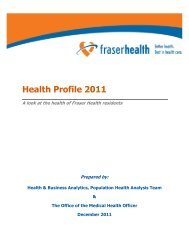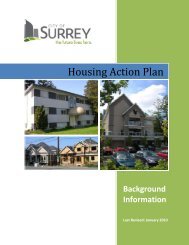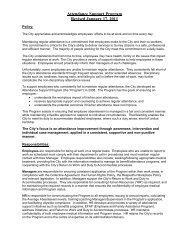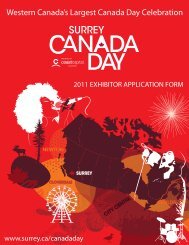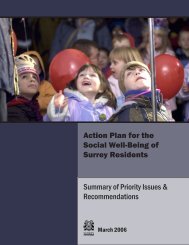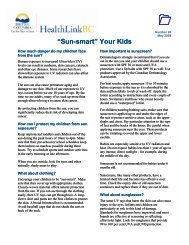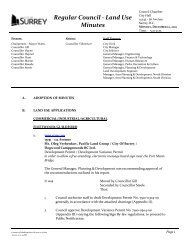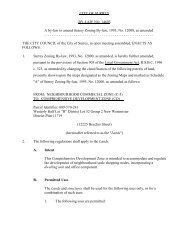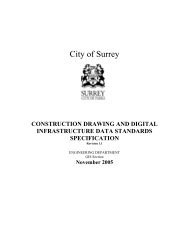Blackie Spit Park: Wildlife Habitat Enhancement Plan - City of Surrey
Blackie Spit Park: Wildlife Habitat Enhancement Plan - City of Surrey
Blackie Spit Park: Wildlife Habitat Enhancement Plan - City of Surrey
Create successful ePaper yourself
Turn your PDF publications into a flip-book with our unique Google optimized e-Paper software.
3.3.3 Management Priorities<br />
First priority: management units whose management goals will be most affected by lack <strong>of</strong> action<br />
because <strong>of</strong> the growth <strong>of</strong> invasive species, or from encroachment by native species.<br />
This priority may apply to only portions <strong>of</strong> these MUs, or it may apply in addition to other priorities;<br />
therefore, an MU may appear in two categories. Because invasive species removal has been<br />
undertaken recently, this priority may not be as high as it once was in some MUs, but as the long-term<br />
effectiveness <strong>of</strong> the broom (Cytisus scoparius) removal programs is as yet unknown, MUs that had<br />
a recent problem are included.<br />
MU 8, MU 9, MU 10, MU 11, MU 12, MU 14<br />
Second priority: management units whose management goals will not be realized until habitat<br />
management activities are completed.<br />
MU 2, MU 4 (north part), MU 5, MU 15, MU 16, MU 17, MU 19<br />
Third priority: management units whose management goals are currently being realized, at least in<br />
part, but will be enhanced through management activities (in addition to any required invasive species<br />
removal).<br />
MU 6, MU 8, MU 9, MU 10, MU 11, MU 12, MU 13, MU 14,<br />
Fourth priority: management units that require little or no action.<br />
MU 1, MU 3, MU 7, MU 18<br />
3.3.4 <strong>Wildlife</strong> Use Monitoring for <strong>Blackie</strong> <strong>Spit</strong><br />
Establish baseline wildlife use data for birds, voles (in MU 4 old-field), larger diurnal mammals<br />
(coyotes, deer), and amphibians (in MUs 6 and 8). To be most useful, the data should be collected<br />
in a systematic manner so summary statistics can be calculated for comparison with future surveys.<br />
There is also value in recording incidental observations <strong>of</strong> wildlife occurrences.<br />
3.3.4.1 Incidental Records and Surveys<br />
Incidental observations need only record date, observer, MU, habitat (from a predetermined list <strong>of</strong><br />
options), species, and number <strong>of</strong> individuals. <strong>Park</strong> employees and visitors could be provided with<br />
cards for completing incidental records, which could be in the form <strong>of</strong> a single observation <strong>of</strong> interest,<br />
or <strong>of</strong> a day’s birding. A sample survey card (below) could form the basis <strong>of</strong> a card design. Data<br />
entry, preferably into a dBase compatible program such as dBase V, Paradox, or Access, (or in a<br />
database accessible format in a spreadsheet such as Lotus 123, Quatro Pro, or Excell), would<br />
facilitate the use and summarization <strong>of</strong> the data. Perhaps a volunteer group, such as the White Rock<br />
and <strong>Surrey</strong> Naturalists could be custodians <strong>of</strong> the database.<br />
<strong>Blackie</strong> <strong>Spit</strong> <strong>Park</strong>: <strong>Wildlife</strong> <strong>Habitat</strong> <strong>Enhancement</strong> <strong>Plan</strong> – PART 1: Background and Summary 16



